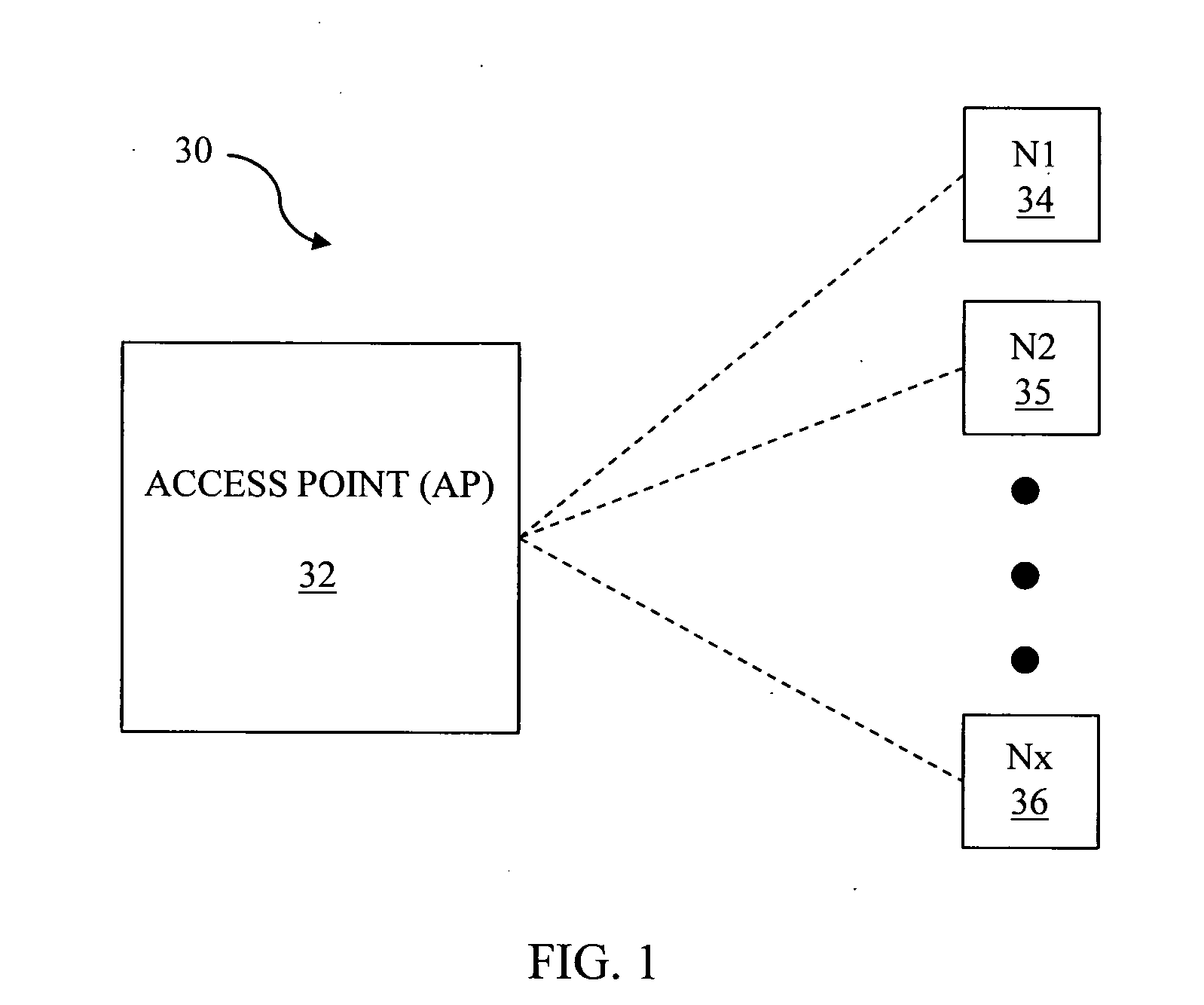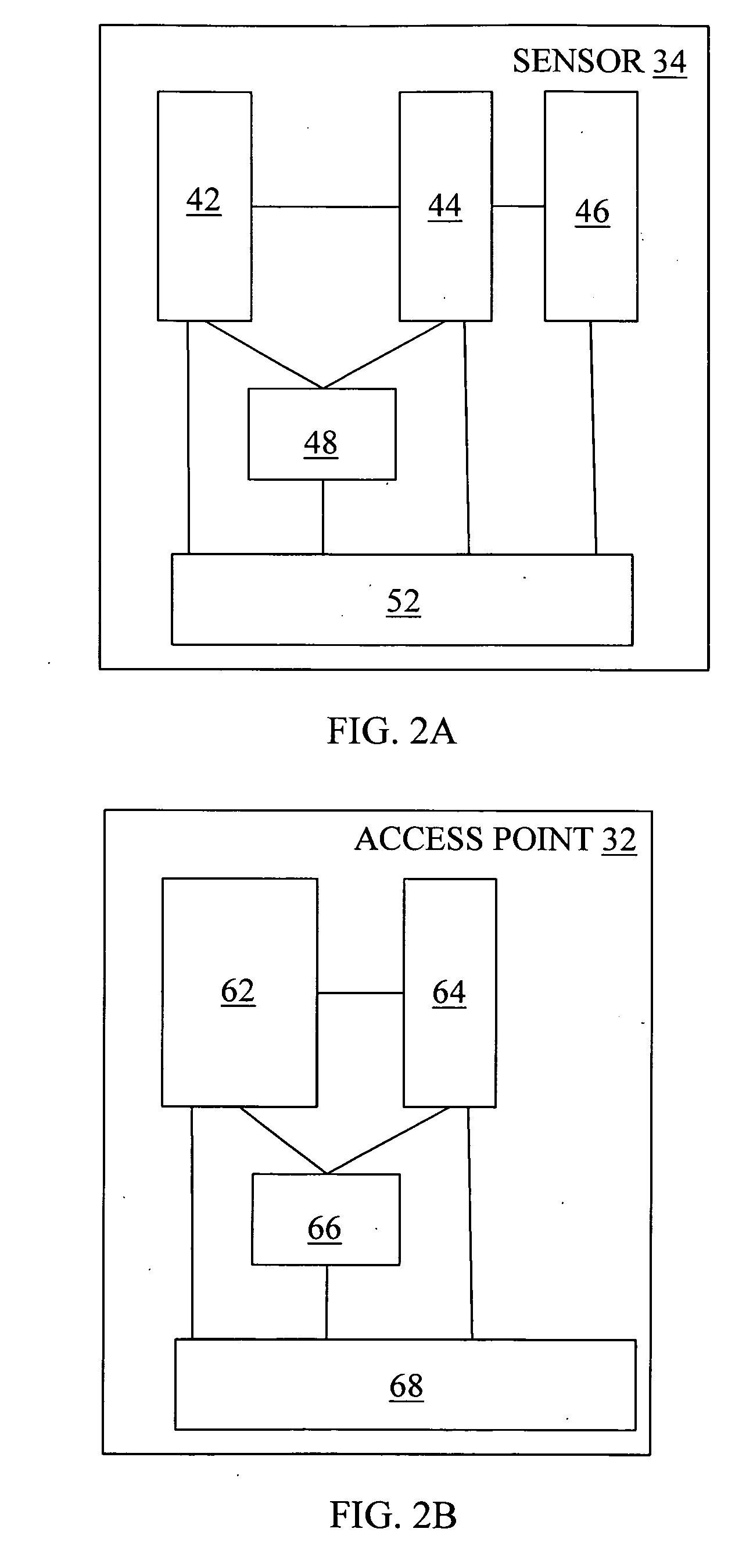Synchronizing wireless devices
a wireless device and wireless technology, applied in the field of wireless communication, can solve the problems of inconvenient data transmission, high data latency requirements, and high reliability requirements of aircraft applications, and achieve the effect of less accura
- Summary
- Abstract
- Description
- Claims
- Application Information
AI Technical Summary
Benefits of technology
Problems solved by technology
Method used
Image
Examples
Embodiment Construction
[0037]FIG. 1 is a schematic illustration of a wireless sensor system 30 that includes a wireless access point (AP) 32 and a plurality of wireless sensors N1, N2, . . . Nx 34-36. The AP 32 exchanges digital data with the sensors 34-36 including sensor data, status information, commands, etc. The AP 32 may include a computer readable storage medium and one or more processors to perform various functions as further discussed elsewhere herein. In an embodiment herein, the sensors 34-36 may be aircraft sensors used to measure aircraft parameters such as temperature, vibration, etc. However, the sensors 34-36 may represent any appropriate wireless data transceiver and thus, reference herein to the sensors 34-36 and / or a subset of the sensors 34-36 should be understood to include a general reference to a wireless data transceiver. Furthermore, there may be any appropriate number of sensors / data transceivers used to provide the functionality described herein. Similarly, although the system ...
PUM
 Login to View More
Login to View More Abstract
Description
Claims
Application Information
 Login to View More
Login to View More - R&D
- Intellectual Property
- Life Sciences
- Materials
- Tech Scout
- Unparalleled Data Quality
- Higher Quality Content
- 60% Fewer Hallucinations
Browse by: Latest US Patents, China's latest patents, Technical Efficacy Thesaurus, Application Domain, Technology Topic, Popular Technical Reports.
© 2025 PatSnap. All rights reserved.Legal|Privacy policy|Modern Slavery Act Transparency Statement|Sitemap|About US| Contact US: help@patsnap.com



